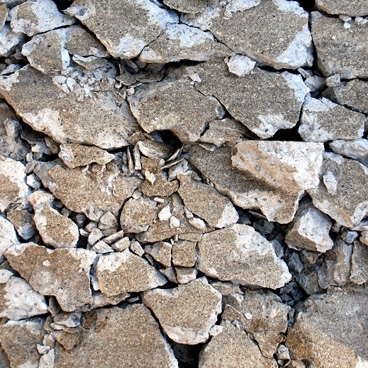Concrete is one of the most extensively used materials worldwide — on average, more than two tons per year of the rock-like stuff is produced for every man, woman and child on Earth, making its use second only to water. And that vast amount of new concrete is responsible for somewhere between 5 and 10 percent of global greenhouse gas emissions, making it a significant target for improvements.
To that end, MIT in 2009 established a research group called the Concrete Sustainability Hub, with support from the cement industry. This month, the Concrete Sustainability Hub issued two major reports — one on concrete pavements, the second on concrete buildings — that examine in detail those products’ life-cycle costs, in both money and greenhouse gas emissions. The group’s principal researchers say these are the most comprehensive and transparent (all their data and assumptions are open) analyses ever attempted.
One example of the pavement report’s novel contributions is to take into account the effects of different methods and materials used for constructing pavements. These decisions can significantly impact the performance of the vehicles that eventually travel over them, but in previous efforts to quantify pavements’ life-cycle costs and emissions, there has been little or no attempt to factor in these variables. Similarly, maintenance practices, including the emissions resulting from traffic delays and detours caused by road repairs, are not often included in assessments.
The MIT report on pavements attempts to quantify all of these elements and include their overall impact. For example, differences in surface roughness and in the stiffness of the pavement, it turns out, do have a small impact on vehicle gas mileage, which, when multiplied by the vast number of vehicles on the road, can add up to a major difference in emissions over the pavement’s full life cycle.
“We wanted to put out a methodology that’s more or less comprehensive, looking at everything in the whole life cycle,” says Nicholas Santero, a research scientist in MIT’s Department of Civil and Environmental Engineering and the lead author of the 100-page report on pavements.
To study the effect of pavement stiffness, the team used computer models, as previous efforts to directly measure physical effects had been “all over the map” because the differences are so small, Santero says. Essentially, less-stiff roads that give more as a vehicle passes over create a small indentation where the wheels are, so that to a very small extent the car is always going “uphill” and uses more fuel. Stiffer roads, such as those made from concrete rather than asphalt, can thus provide a slight boost in efficiency.
Because there are wide variations in usage patterns and climate conditions experienced by different roads, the MIT team looked at 12 specific types of roads — ranging from interstate highways to local surface roads — to carry out their analysis.
Along with devising a method that others can apply to evaluating choices for a particular construction project, the team came up with some specific suggestions of actions that could improve a road’s life-cycle costs, emissions or both:
- Increase maintenance work on roadways to keep the surface smoother, thus improving the gas mileage of the cars and trucks that use it. For example, instead of scheduling road maintenance every 20 years, do it every 10 years.
- When pavement is replaced, pulverizing the old concrete and leaving it exposed for at least a year causes it to absorb carbon dioxide from the air, helping to cancel out part of the emissions released when the cement was produced.
- Even the color of a road can mitigate its overall effect on Earth’s climate: Lighter roads reflect more sunlight, while darker ones absorb it and get hotter. Just as white roofs can help to reduce warming of the climate, so can lighter pavements — which can be produced by adding lighter-colored aggregate (gravel or crushed rock) to the concrete mixture.
- Reassess the design criteria for road construction, to account for local and regional differences. Most specifications are now generic, which results in over-engineering many roads, making them stronger than they need to be. Simply reducing the paving thickness in places where this can be done without degrading performance could significantly reduce the amount of cement used, thus reducing both costs and emissions.
- Add more fly ash, a waste product scrubbed from the emissions of coal-fired powerplants, to the concrete mix. This material is already widely used, but increasing its use could displace more cement powder, which is a highly energy-intensive material to produce.
Adding up these measures, Santero says, it’s possible to reduce the overall carbon emissions associated with concrete pavements by about 50 percent, relatively easily.
Amlan Mukherjee, an associate professor of civil and environmental engineering at Michigan Technological University, says the MIT researchers “have significantly contributed to the field of pavement LCAs [life-cycle assessments].” He adds that “particularly noteworthy is their work in pavement-vehicle interaction — it sets the scientific foundation for estimating emissions during the service life of pavements.” Overall, he says, the report “rightly points out its various limitations due to the inherent uncertainty of the problems — however, it sets up a comprehensive framework that researchers can extend in future.”






